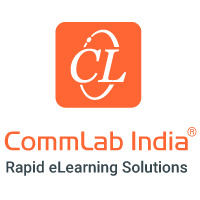eLearning Content Comprehension: How To Tackle Heaps Of Content When Developing Online Courses
The first challenge that we encounter when we get down to designing eLearning courses is to understand the huge pile of content that is in front of us. Subject Matter Experts, training managers, and project stakeholders share volumes of content that they perceive are essential for the development of the course. Faced with such a huge pile, it is indeed challenging to first understand what it is all about and then segregate relevant content from the irrelevant and unnecessary information. Often, we may not be familiar with the content, it may be lengthy, technical in nature, and quite boring. Yet, eLearning content comprehension is something that is very important before we get on to developing the eLearning course. Here are 3 tips you can keep in mind to tackle the raw content that is shared for course development.
1. Consult Project Stakeholders To Define Broad Learning Objectives Of The Course
Assume you have been summoned to design a course for onboarding new employees. You are given the company’s Code of Conduct manual, a set of PPT presentations that were used previously by the HR manager during classroom training sessions, videos of senior management addressing employees during a recent event, clippings from the marketing department of a recent advertisement that was released to the media, and some PDF documents that talk about the company’s history, vision, and mission.
If you do not have a clear idea of what the new employees are expected to know and do at the end of the course, you will not be able to identify the right content from all the clutter in front of you. Therefore, it is important that you sit with the project stakeholders or HR managers to define the broad learning objectives of the course. You can have around 3 to 5 learning objectives that will help you choose the right content for the course.
Examples of typical learning objectives for an onboarding program.
By the end of the course, learners will be able to:
- Recognize the organizational structure, its vision, and mission.
- Identify the roles and responsibilities in relation to their jobs.
- Explain how they help achieve business goals.
- Infer the employee guidelines and Code of Conduct manual.
- Access information about policies and procedures using the HR portal.
2. Use The Active Reading Method To Skim Through The Content And Get An Overall Understanding Of The Subject
Active reading allows you to engage with the content in a manner that enables you to make the best use of it for the given purpose. In the context of an eLearning course, you will be able to analyze and distinguish unnecessary content and identify that which is important to address the learning needs. Taking a cue from what Harvard recommends for its students, make notes along the margins (if using physical paper) or in the comments box (if using digital format) to highlight how the particular piece of content is relevant to the course or which learning objective it fulfills. It is a good practice to note down questions that arise in your mind as it might help you look for missing content. At the end of the exercise, you should be able to provide an outline for the given content, summarize it, and be able to analyze if the available content is logical and self-sustaining or requires additional material to make sense.
3. Align Content To The Broad Learning Objectives
Finally, you should be able to evaluate if the available content adequately addresses the learning objectives. If you segregate content based on the learning objectives, you will be able to identify the content gaps. For example, if you expect employees to know how to apply for leave or check for a pending training program using the HR portal, you need to have the relevant course material that explains the process so that it goes into the course curriculum. However, if you discover that you don’t have any material pertaining to the online HR portal or the process that needs to be followed by employees for leave application, you would have identified a content gap. This enables you to look for the right content from appropriate sources and include it as a part of the content library. Thus, it is important that you align content to the broad learning objectives right during the content analysis and comprehension stage. This ensures that the course development is thorough and purposeful.
Final Word
eLearning content comprehension is the first step to successful course development. If you want to learn more about the steps involved in eLearning content comprehension in particular, and eLearning course development in general, download the eBook Instructional Design 101: A Handy Reference Guide to eLearning Designers. The book is a useful resource for anyone interested in eLearning development and contains some handy tips and guidelines to create effective online courses.








